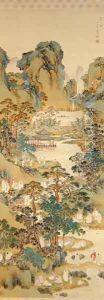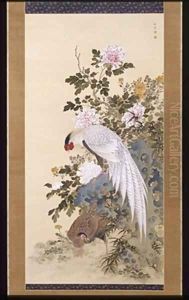Nakabayashi Chikkei Paintings
Nakabayashi Chikkei was a Japanese painter of the late Edo period. Born in 1816, Chikkei's work exemplifies the characteristics of the nanga (Southern painting) school, which was heavily influenced by Chinese literati painting traditions. This school of painting was particularly known for its emphasis on personal expression and the incorporation of calligraphic brushwork into the painting, often with a strong focus on landscapes, flowers, and birds.
Chikkei was active during a time of significant political and cultural transition in Japan, as the country was opening up to the West and the Edo period was coming to an end. Despite the influx of Western art and ideas, Chikkei remained deeply rooted in traditional Japanese aesthetics and techniques. He is known to have studied under the prominent nanga painter Tani Bunchō, who was instrumental in the development of the nanga movement in Japan.
Throughout his career, Chikkei was appreciated for his delicate and expressive use of ink, which allowed him to capture the essence of his subjects with minimal strokes. His landscapes are often tranquil and evocative, featuring elements such as distant mountains, serene waterways, and subtle vegetation. His work often conveyed a sense of harmony and a deep appreciation for the natural world, reflecting the philosophical and spiritual ideals of the nanga painters.
Unfortunately, Nakabayashi Chikkei died relatively young, at the age of 51, in 1867. His death came at a time of great change in Japan, as the Meiji Restoration was ushering in an era of modernization and Westernization. Despite the changing times, Chikkei's work remained a testament to the enduring appeal of the nanga style and its ability to express the natural beauty and cultural depth of Japan. Today, his paintings are considered important contributions to the Japanese artistic heritage and continue to be studied and appreciated for their aesthetic qualities and historical significance.

